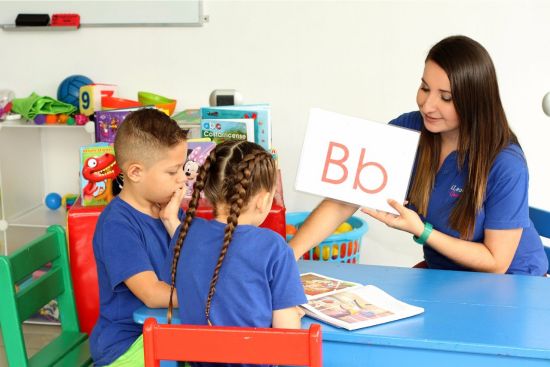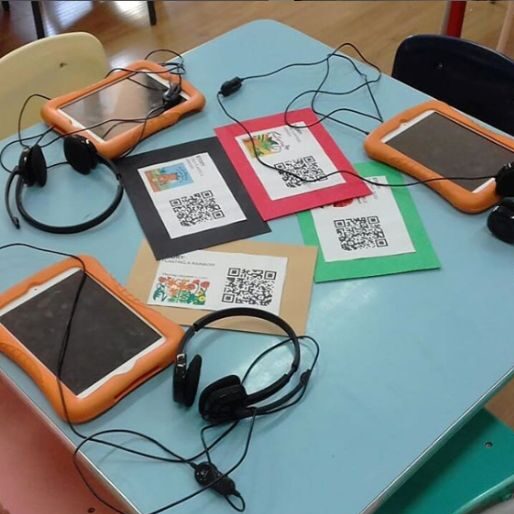When it comes to AI, there are mixed opinions in educational circles. While ethical concerns should certainly be considered and addressed, there are also incredible ways these tools can be used by teachers to improve instruction and student learning. Understanding AI tools and identifying ways to leverage them as instructional aids, as well as instructing students on the ethical uses of AI, can provide you and your students with some amazing opportunities.
For ESL teachers, AI can become a powerful aid for planning lessons and generating activities, thus saving precious time that can be invested in more fruitful pursuits. To be sure, there are a few AI-powered educational resources, such as Diffit, Eduaid, or Magic School, that provide an array of features to help teachers in lesson planning and design. Let’s look at some ways ESL teachers can leverage AI tools to promote students’ reading skills in particular.
Teaching English virtually? Read about some of the best digital tools for teaching English online.
1. Modify reading materials to adapt them to different language levels.
As an ESL teacher, you can use any open-source AI system, like ChatGPT, to accomplish this task. All that is needed is to copy and paste the selected text into the AI assistant and instruct the latter to rewrite the text for the desired English language level. For example, Magic School has a “Text Rewriter” function that does just that. As a measure of caution, always reread and, if necessary, edit the modified material, especially if you are modifying a complex text to make it accessible to a beginner level. Some AI-powered educational sites, like Diffit, will automatically produce a list of keywords with definitions as well as writing prompts in the form of short-answer questions and open-ended questions.

2. Extract vocabulary from readings and produce a glossary with native-language translations.
While most AI-powered educational sites don’t offer a specific feature for vocabulary extraction, you can accomplish this by simply instructing an open-source AI chatbot to extract all the vocabulary from a text and then translate it into your student’s native language(s). Vocabulary translation can be easily accomplished by using any automatic translator. Before the advent of AI, vocabulary extraction used to be a much more complex task. All in all, this is an extremely useful feature that encourages learners to read in the target language and possibly removes the temptation to copy and paste the text into a computer translator.
Learn about the top methods for introducing new words when teaching ESL vocabulary.
3. Identify high-frequency and low-frequency words.
Prompt an AI chatbot to identify high-frequency words in a selected text. This helps create vocabulary lists and decide which words to concentrate on. You want your students to be as familiar as possible with high-frequency words, as their knowledge helps increase fluency. However, identifying low-frequency words is also important. If the selected text has too many low-frequency words, it may not be suitable for some students. On the other hand, you may want to select some low-frequency words and focus on them for vocabulary enrichment.
Looking for fun ways to teach vocab? Read about 8 engaging ESL vocabulary games for teaching in person or online.
4. Personalize news articles using AI.
You can easily generate readings in your student’s area of interest by prompting an AI system to write an article on a given topic. Students will be much more likely to engage in the reading process if they know they will gain knowledge about something they are passionate about.
A good way to go about this is to have your learners complete a questionnaire. You can, for example, ask them to tell you about three topics they are interested in, three hobbies they engage in, three places they would like to visit, three things they love to eat (two from their native cuisine and one foreign food), and three things they would like to know more about. The answers to the questionnaire will generate an adequate amount of topics you can use to create reading material. You can then cross-reference the information received since some students will share the same interests and assign your learners readings based on topic and language level.
It’s important to remember that you must check and edit all AI-generated content carefully before presenting it to students. If a prompt is unclear or simply misunderstood, AI tools will generate a response that may not be relevant or correct. You can minimize incorrect information and improve generated responses by asking AI systems to give sources and links for the information provided and by working to provide prompts that are as specific and detailed as possible. It takes some practice, but with the proper precautions and attention to detail, AI assistants can be a fantastic asset in the ESL classroom.
Read about 7 effective strategies to personalize your English lessons.
5. Ask AI tools to write a short story about a topic your students are interested in.
Some learners prefer reading stories rather than articles, and if you teach young students, storytelling can be a powerful tool for ESL learners. Using the same steps outlined in the previous section, you can ask an AI assistant to write a story on any given topic. You could also instruct students on how to write prompts and query the AI assistant themselves. Make this a teachable moment, and take some time to explain to your students how to write a good prompt and how to assess and revise the AI-generated results.
For example, point out that prompts must be specific. Instead of simply asking the AI system to write a story about cats, students should specify the desired English language level and provide a list of words to be used in the story, i.e., words they need to learn or practice, etc. Let your students know that they should always read what the AI tool produces with a critical eye and ask for teacher feedback when necessary.

6. Generate reading comprehension drills.
One excellent feature of AI-powered educational sites is the ability to produce reading comprehension exercises in the form of multiple-choice questions, short answers, and open-ended questions. This feature drastically shortens the time teachers would normally have to invest in creating reading-related activities. It allows them to get immediate feedback on their students’ understanding of the reading and their ability to reflect on the topics presented. In addition, the open-ended questions can be modified to spur and enhance critical thinking skills.
Learn more about effective ways to check for comprehension using CCQs.
7. Ask AI tools to analyze the grammatical and syntactical structures in the reading.
This feature is ostensibly absent in most AI-powered educational sites. However, with open-source AI assistants like ChatGPT, teachers can obtain a reasonably well-crafted text analysis by breaking the task down to specific questions. For instance, in the example below, asking ChatGPT to analyze the syntactical structure of a short text yielded a list of simple sentences, complex sentences, compound sentences, clauses (dependent and independent), and phrases present in the text. Asking it to provide a list of all the verbs with tense specification similarly produced a list of verbs subdivided by tense (present tense, simple past, past perfect, gerund).

Such an analysis can help students identify the different parts of speech and better understand their roles in a sentence.
Read about top strategies for teaching grammar to English language learners.
8. Generate stories and drills to practice specific vocabulary and grammar.
If there are specific lexical areas you want your students to learn and practice, you can instruct an AI assistant to write a story based on a vocabulary list. For example, if you are teaching students the vocabulary needed to order at a restaurant, you could ask AI to write a three-paragraph story using words such as restaurant, waiter, order, eat, drink, soda, water, coffee, food, main course, side dish, meat, fish, beef, chicken, salmon, salad, appetizer, dessert, delicious, expensive, etc. Alternatively, you could focus on grammar structures. For example, for an ESL beginner level, you could ask an AI assistant to write a short story to practice the following grammar structures: personal pronouns and present tense.
Your prompt should be as specific as possible, preferably providing a few details for the story. Here is an example of a prompt you could submit to an AI tool:
- Write a short story (200-400 words) for young ESL students at a beginner’s level to practice the following grammar structures: personal pronouns and present tense forms of to be, to have, to want, to go, and to say. The story should be about a boy who wants a pet cat but doesn’t have one. He tries three different tactics to convince his parents that he should be allowed to get a cat. In the end, he is allowed to get a pet cat. All verbs should be in the present tense. Provide plenty of repetition.
This type of prompt will provide you with a skeleton story that you can then edit by adding, removing, or replacing words. For example, below you can see the story that ChatGPT created from the above prompt. It would need a little editing but is a great start.

For those interested in comprehensible input and TPRS teaching strategies, this method can also be used to create TPRS-style stories.
Artificial Intelligence is rapidly integrating into daily life and, like most technological innovations, will remain for the foreseeable future. There will be a time when people won’t remember the pre-AI era. Thus, it is incumbent on educators to familiarize themselves with this tool and teach students how to use it productively and ethically. From the ability to modify texts and adapt them to students’ language level to the ability to generate articles and stories on any topic, AI tools provide an array of useful resources to help facilitate the job of ESL teachers.







